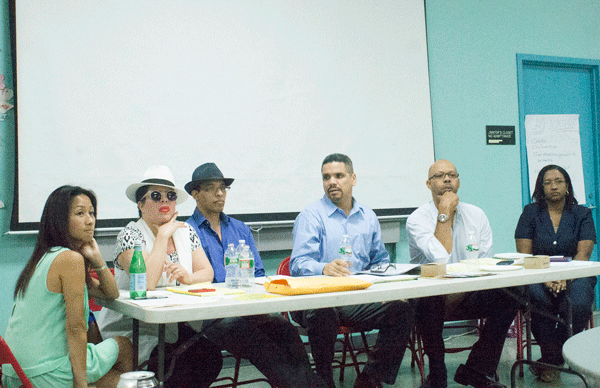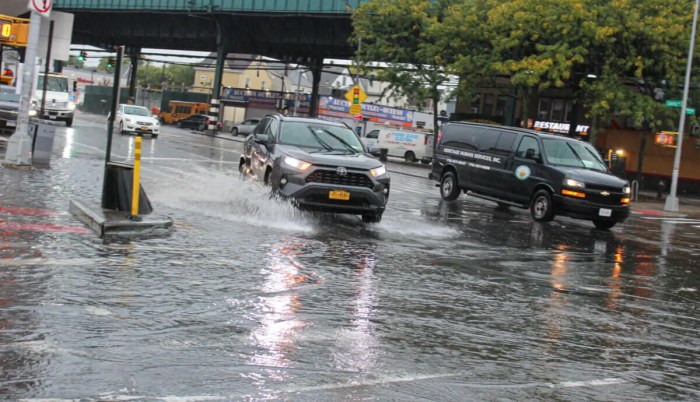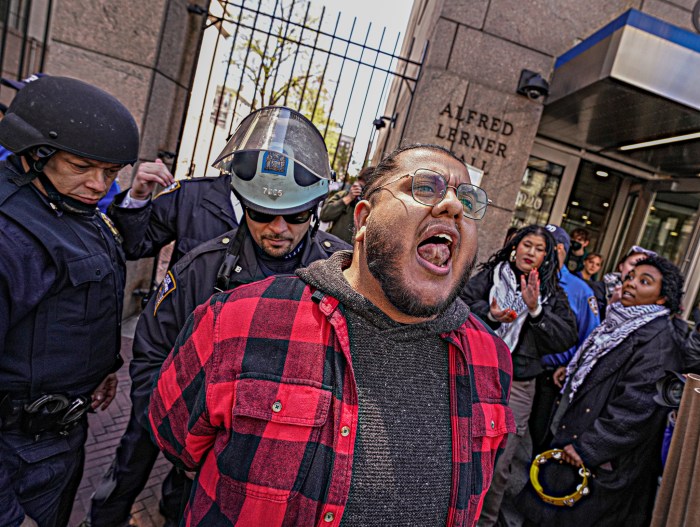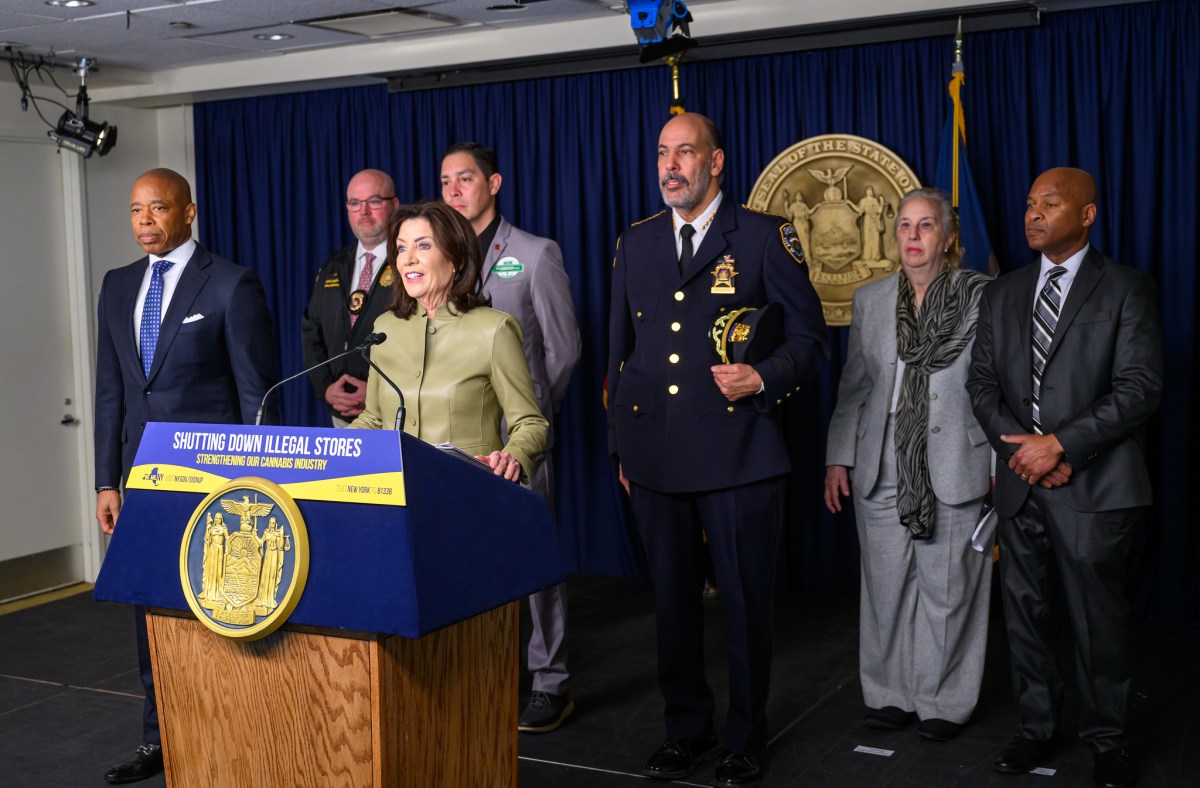
BY ZACH WILLIAMS | The tables turned for a group of Lower East Side residents expressing their community grievances on Aug. 27.
In recent months they had to sit and listen as others explained their visions for the neighborhood’s future. But at this meeting, held at 82 Rutgers St., representatives of Borough President Gale Brewer, Governor Andrew Cuomo, Community Board 3, state Senator Daniel Squadron and Councilmember Margaret Chin came to listen as Tenants United Fighting For Lower East Side, a.k.a. TUFFLES, unveiled their new organization’s agenda and observe their growing critical mass.
“I just didn’t think that this area was being represented,” said board member Trever Holland, about the motivation for forming TUFFLES (pronounced “tough L.E.S.”) which currently consists of the tenant associations from Two Bridges Tower and Lands Ends 1 and 2.
They formed the group earlier this year following their frustration with developments in the Two Bridges area that they say lacked adequate input from residents living near the East River esplanade, including the Extell Development project at 229 Cherry St., as well as Basketball City and other community amenities that TUFFLES members say are overly accommodating toward nonresidents.
Although the group’s members all live in the same area, settling on organizing strategies doesn’t come easy, according to Marc Richardson, a resident of Lands End 1 on Cherry St. and a TUFFLES board member.
“It’s a challenge even for us to all get these three different tenant associations in the room and agree upon how we are going to advocate for one issue or another,” he said. “I think that’s even a greater challenge for external groups to do because they are not informed by being actual residents.”
At the meeting, the politicians’ liaisons gave verbal commitments to TUFFLES for future cooperation on issues such as securing a new supermarket to replace the now-demolished Pathmark at 229 Cherry St. Asked whether their advocacy departs from the traditional building-centric focus of tenants associations, Holland, who is president of Two Bridges Tower Tenant Association, said yes.
“I think the main concern is not so much quality of life,” she said. “It’s making sure that we as residents have a voice in our neighborhood and I think that’s the main concern for most of us.”
Time is of the essence as wealthier people move into the neighborhood, potentially diluting the future political sway of longtime residents, Richardson added. More tenant associations are in talks with TUFFLES on possible membership, according to Aaron Gonzalez, another board member.
About two months ago, Holland was just an audience member listening as Extell Development representatives updated residents on the Cherry St. project. Plans for the site called for two separate buildings, one a 68-story luxury high-rise, and the other slated for affordable units.
When Extell President Gary Barnett presented the plans to the C.B. 3 Land Use Committee on June 18, the audience directed outrage not only at him but also at the committee itself, which they said didn’t sufficiently reflect representation from the affected neighborhood.
While frustrations with the community board played a role in TUFFLES’s creation, the Extell project exemplifies the greater forces at play in the community, according to Richardson.
“It’s just so emblematic of the problem, having a poor building right next to a luxury building,” he said after the Aug. 27 meeting. “I just think it violates the fundamental spirit of putting lower-income folks in the same buildings as high-income folks.”
The for-profit Basketball City, meanwhile, is another example of a neighborhood facility that falls short of meeting nearby residents’ needs, according to TUFFLES board member Daisy Echevarria.
The 70,000-square-foot sports facility at Pier 36 opened in 2012 after years of delays and legal wrangling. But TUFFLES members repeatedly charged that the venue acts more like an event space than a community resource. While many of the pertinent decisions affecting the pier were made years ago, it is never to late to revisit old issues, according to Gonzalez.
“It doesn’t benefit the community that is right in front,” Echevarria said. “All these corporations, they have these big gallery openings. We never hear about it. We’re never invited.”
Crime in public housing, as well as overnight commercial truck parking on side streets, among other issues, also concern TUFFLES members. Another annoyance, Holland said, is teenage skateboarders who now practice “edging” along the long, rectangular seating on the East River esplanade.
When Gonzalez was a child, walls down by the waterfront sufficed for games like handball. In recent years, though, new facilities seem to be ignoring the Lower East Side’s traditional athletic needs, he said. Furthermore, Little League and recreational league teams from farther Downtown and elsewhere dominate the use of local sports fields, he added.
Again, perhaps prior consultation with nearby residents could have avoided the situation, TUFFLES board members say.
“They knocked down the wall that you play handball and paddleball on, and what did they start making? Field hockey, volleyball,” Gonzalez said. “These are not things that we play, so who are they making them for?”

















